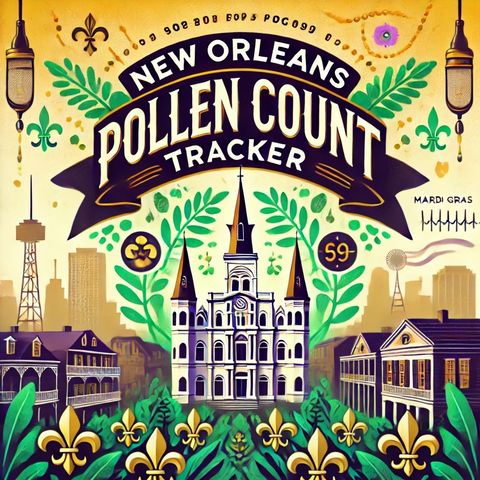Pollen Count for New Orleans, LA on 11-25-2024

Download and listen anywhere
Download your favorite episodes and enjoy them, wherever you are! Sign up or log in now to access offline listening.
Pollen Count for New Orleans, LA on 11-25-2024
This is an automatically generated transcript. Please note that complete accuracy is not guaranteed.
Description
In anticipation of today's pollen levels in New Orleans, LA, residents can expect a relatively low pollen count, which is typical for late November. During this time of the year,...
show morePollen levels are measured based on the concentration of pollen grains per cubic meter of air. Today’s readings are anticipated to be on the lower end of the spectrum, primarily owing to the current climatic conditions. Generally, pollen activity in New Orleans is affected by various factors, including humidity, temperature, and wind patterns. With autumn in full swing, many local plants have completed their flowering cycles, and fewer species are contributing to the pollen count.
In New Orleans, the predominant contributors to pollen levels typically include trees, grasses, and weeds. During the spring and early summer months, trees like oak and pine are significant pollen producers. However, by November, tree pollen levels have largely diminished. Grass pollen, which can be a problem from spring through the summer, is also less prevalent by late autumn. The primary concern during this time generally revolves around weed pollen.
Ragweed, a common allergen, usually stops pollinating by mid-November. Because of this, the pollen produced by ragweed and similar weeds like sagebrush and pigweed is minimal. The continued reduction in pollen sources as winter approaches helps keep the current pollen levels manageable.
Although the anticipated pollen count today is low, individuals with heightened sensitivities should remain vigilant. It is always best to stay informed through local air quality reports and pollen forecasts. These resources can provide specific data tailored to your immediate area and inform you of any significant changes in pollen levels due to weather fluctuations or unseasonable warming trends, which can cause spikes.
For practical daily management, allergy sufferers may consider simple precautionary measures to minimize exposure. Suggestions include keeping windows closed, especially during high pollen timeframes (typically late morning and early evening), using air purifiers indoors, and washing clothes and hair after outdoor activities to remove any pollen residue.
New Orleans is fortunate to experience a reprieve in allergens this time of year, contributing to more comfortable conditions for both residents and visitors. Today's weather, combined with waning pollen activity, promises clearer air, allowing for outdoor enjoyment with less risk of allergic reactions. However, it is always imperative to monitor allergen levels regularly, as New Orleans' unique climate can sometimes yield unexpected variations.
Information
| Author | QP-5 |
| Organization | William Corbin |
| Website | - |
| Tags |
Copyright 2024 - Spreaker Inc. an iHeartMedia Company

Comments